The sun-kissed Mediterranean region is always a great place to visit.
Here, ancient history comes alive, the cuisine entices with fresh and diverse flavours, the sea is the bluest of blues, and the weather is pleasantly comfortable almost all year round.
A ticket to Split, Malaga, Heraklion, or Naples means pure escape – a getaway filled with culture, fresh air, and spectacular panoramas.
Each of these cities combines rich urban life with excellent beach leisure, so you can have the best of both worlds.
- Split, Croatia – An inspiring escape
- Malaga, Spain – A vibrant southern vibe
- Heraklion, Greece – An unfiltered experience
- Naples, Italy – A deeply passionate destination
Split, Croatia
An inspiring escape
The Adriatic Sea is an integral part of the cityscape in Split, Croatia’s second-largest city and the proud capital of the Dalmatia region.
Here, you’ll inevitably end up on the Riva, a palm-lined waterfront that’s among Europe’s finest promenades.
No matter the time of the day, this area is always brimming with life. Locals mingle with ice cream-holding tourists, the squawks of seagulls mix with the horn blasts of arriving cruise ships, and yachts sway gently in the harbour.
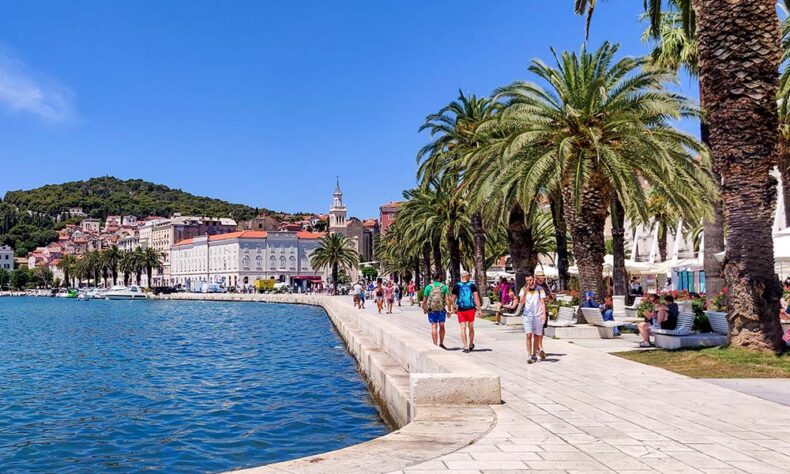
Photo on Unsplash
All of this movement is set against the centuries-old walls of Emperor Diocletian’s Palace, a stunning UNESCO-protected feat of Roman architectural genius.
Half of Split’s historic core is found within the borders of this gargantuan marvel of the ancient world, and it’s full of life in a remarkable, very Croatian way.
Café terraces fill cosy squares where Roman columns still stand, the palace cellars host souvenir stalls, and the narrow streets are never empty.
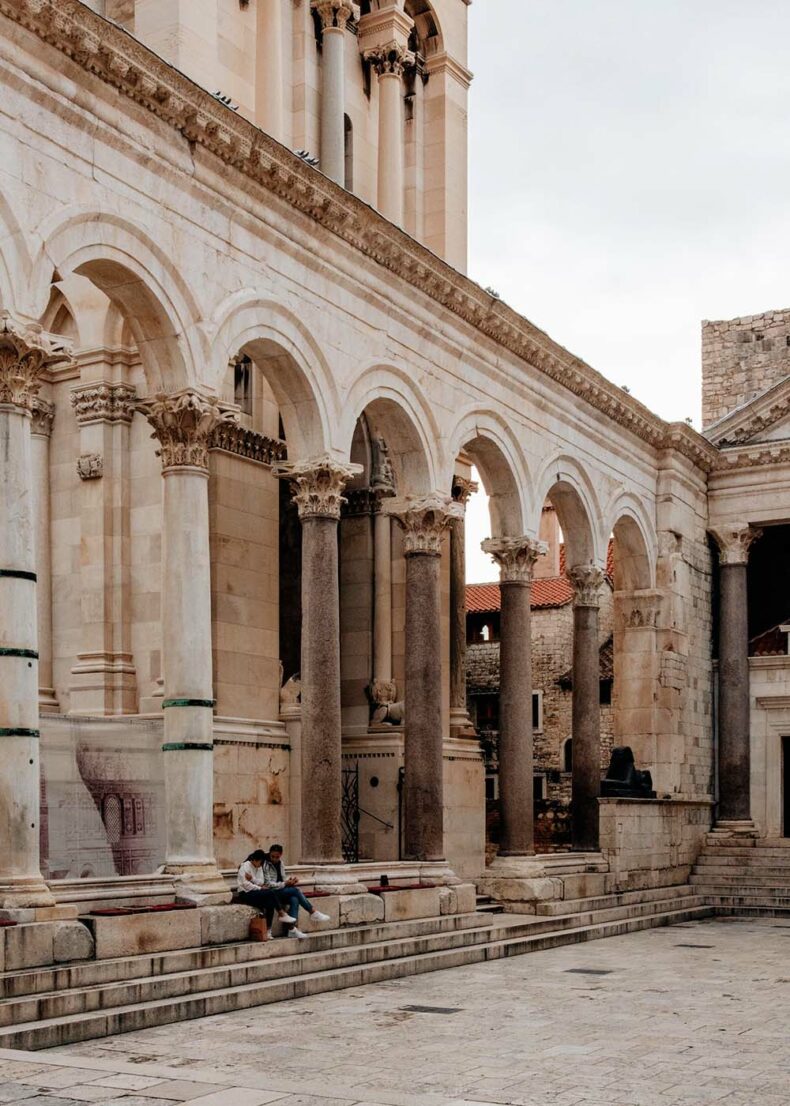
Photo on Unsplash
The centrepiece of the Old Town is the Peristyle, a former palace square dating to the 4th century CE.
Right nearby is the unmissable Cathedral of Saint Domnius, which has an impressive Romanesque bell tower and a choir from the 17th century. The building was constructed from Emperor Diocletian’s mausoleum and is considered one of the oldest churches in the world.
Go a little bit farther, and you’ll arrive at the Venetian-era Narodni Trg Pjaca (People’s Square) full of Baroque-era houses.
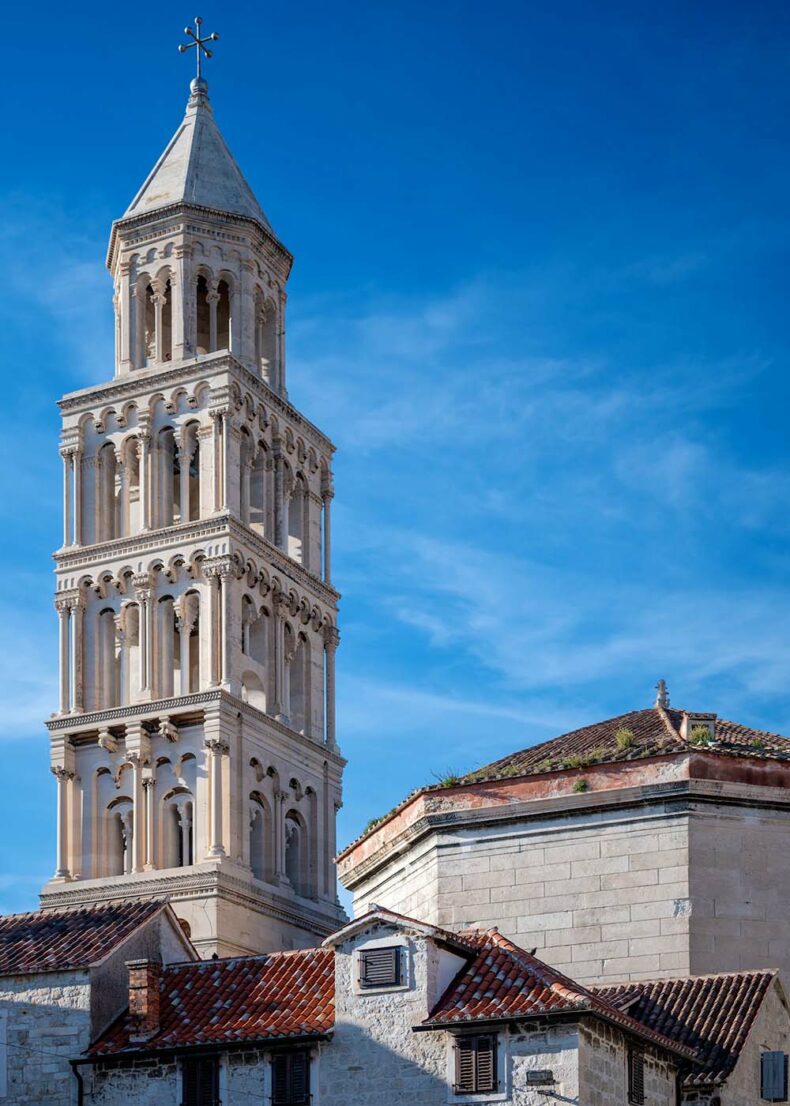
Photo on Unsplash
If Denmark has hygge and Sweden preaches lagom, for Split (and Dalmatia) the philosophy of life is lagano. Essentially, it means ‘easygoing, light, unburdened’. Locals are experts in taking it easy, slowing down, and enjoying life.
And that’s exactly how visitors should approach Split, too. Savour a coffee break while admiring the waters of the Adriatic Sea, take an unhurried stroll among the Roman ruins of the Old Town, and book yourself a panoramic boat tour.
Take it slow, take it easy.
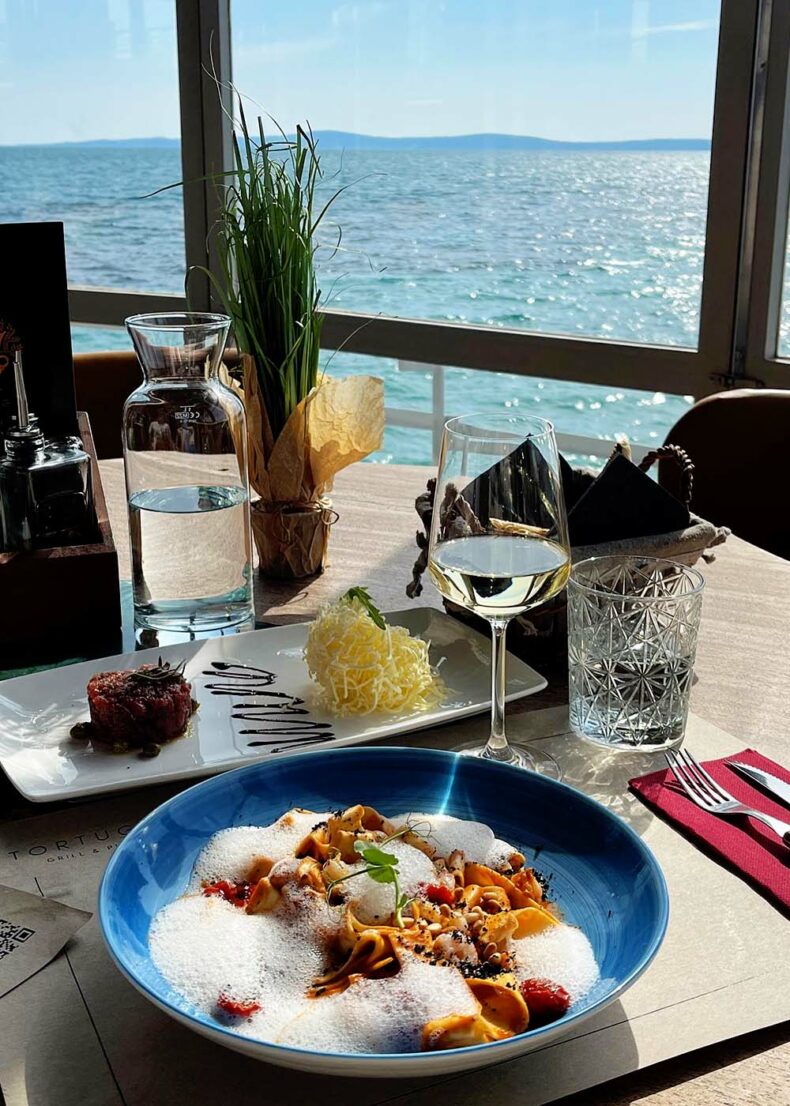
Photo on Instagram
Many visitors treat Split as a transit point for travels farther down the coast or to the islands. But it pays to stay in the city for a while and embrace the zestful local life.
Start the day by browsing fresh produce at the central gradska tržnica (city market) and pay a visit to the covered fish market as well.
Then head to the top of Marjan Hill for magnificent panoramas of the city. Diocletian’s Cellars is a must-visit for fans of Game of Thrones, the television show that was filmed here.
And definitely order grilled octopus, squid, or a mixed meat platter for a hearty Croatian meal at a konoba (local tavern).
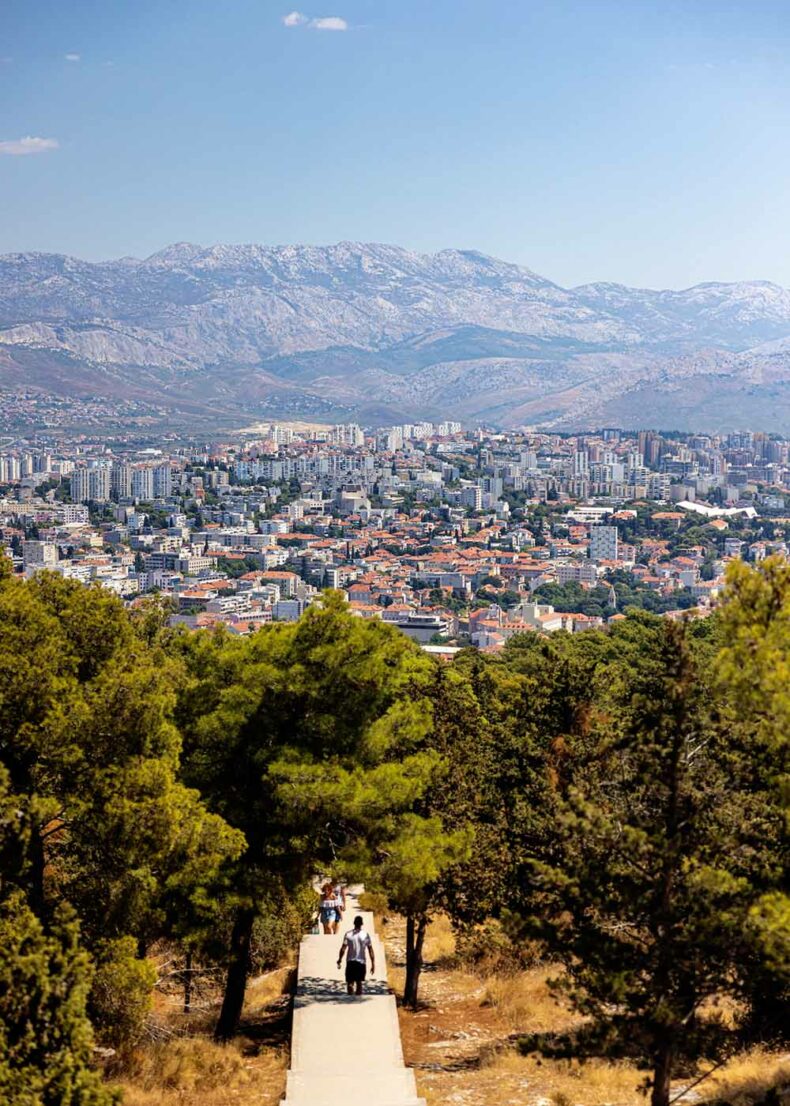
Photo on Unsplash
Malaga, Spain
A vibrant southern vibe
The sublime Mediterranean grandeur of Malaga is at its most impressive from the Gibralfaro viewpoint. Many arrive there by bus, but for an enhanced experience, hike all the way up; it’s absolutely worth it.
The view from the top is to die for: the blue of the Mediterranean Sea meets the green of the lush Malaga Park, the round bullring calls to mind strong Andalusian traditions, and the labyrinthine streets of the Old Town beckon for a stroll and getting lost.
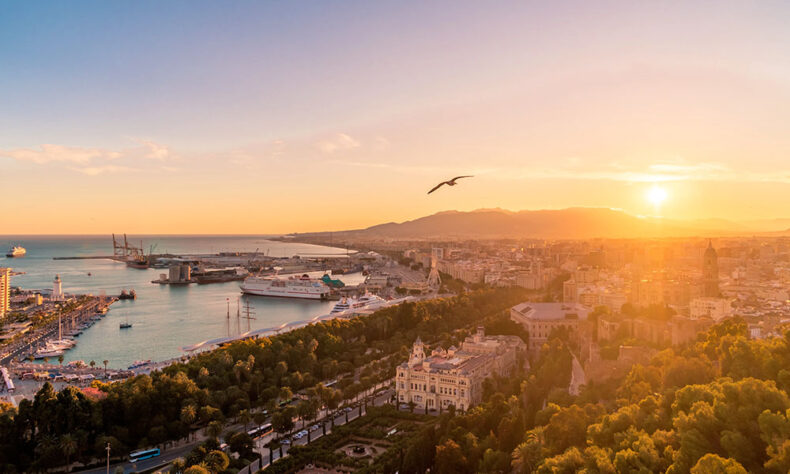
Photo on Unsplash
This Spanish town is steeped in history. For instance, Gibralfaro Castle ranks among the oldest Moorish fortresses in Europe.
Descend a little bit and there’s another Arab masterpiece waiting for you, the elegant Alcazaba. Right under it you’ll find the remains of the Roman theatre.
And all of that even before you’ve reached the Centro Histórico. The old part of this city is a mix of narrow winding streets, hidden courtyards, shaded squares, and various architectural styles. It’s ideal for wandering and stopping randomly for a café con leche or a quick tapas break.
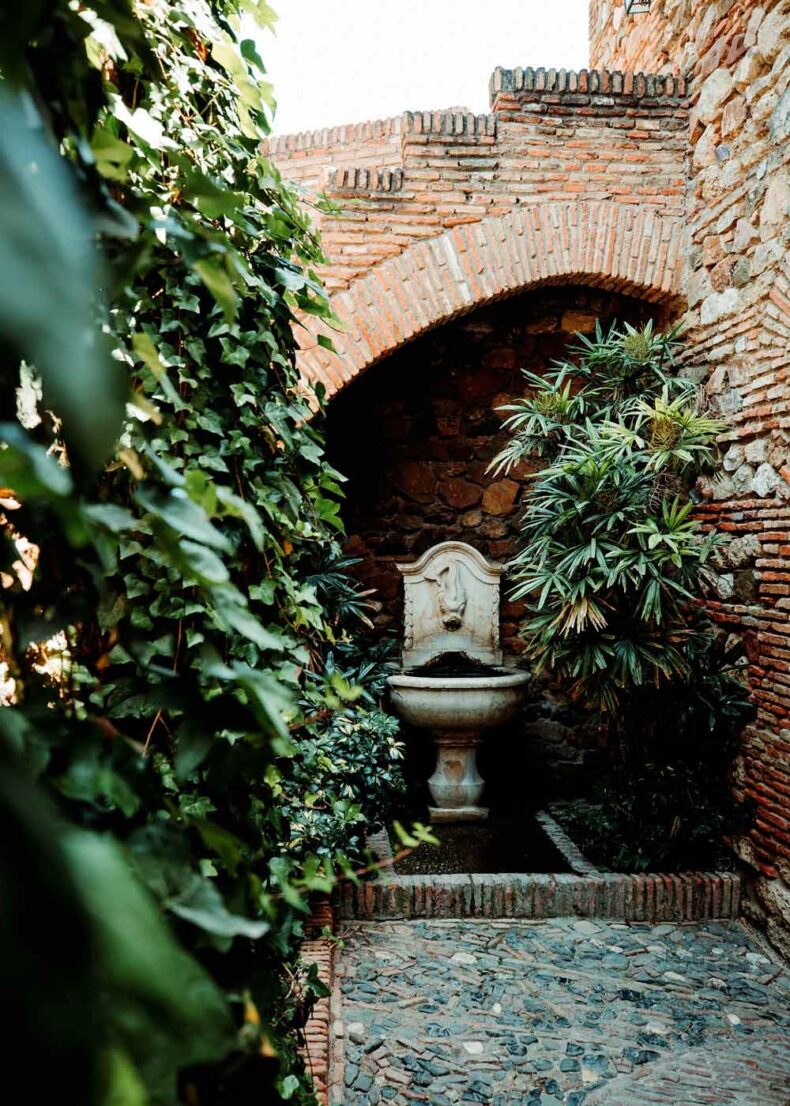
Photo on Unsplash
Southern Spain is the definition of high-spirited. As a prominent centre in Andalusia, Malaga wears its energetic lifestyle with pride. It seems as if the residents have cracked the secret to enjoying life to the fullest.
The streets overflow with excitement, and the terraces of the bars, cafés, and restaurants are always full.
And best of all, everyone’s invited to join this celebration of good times, to become part of the party.
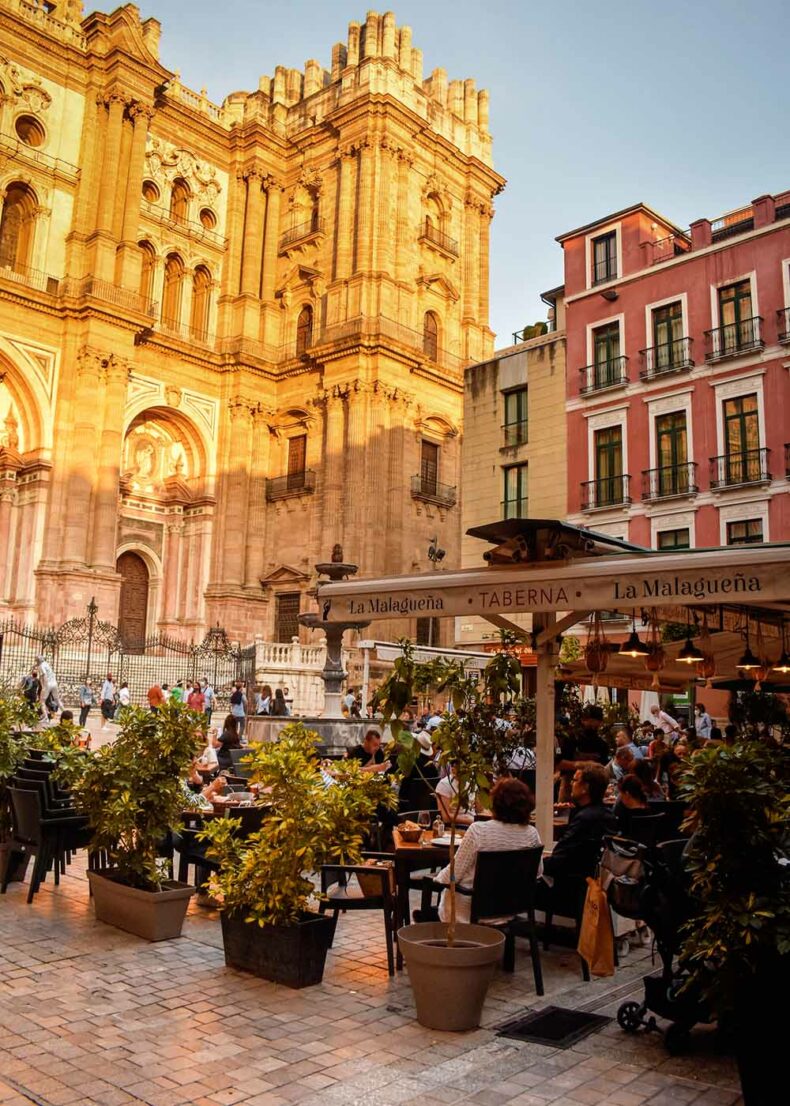
Photo on Unsplash
While Seville and Granada can definitely compete with Malaga in terms of old-world treasures, the latter has an ace up its sleeve. Here, the presence of the Mediterranean Sea and many beaches changes everything.
And you won’t have to spend much time reaching them, either, with the most popular stretch, Malagueta, just a few minutes away from the city centre.
Go a little bit farther south to find the fantastic long Misericordia Beach. Expect golden sands, pleasant water temperatures, and an abundance of beach bars.
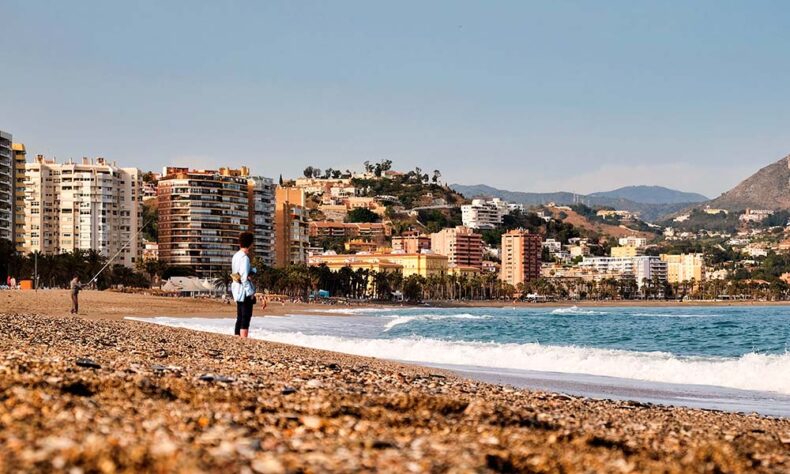
Photo on Unsplash
What Malaga does very well is combining beachside leisure with an urban beat. The city is home to some of the most prominent cultural institutions in the country.
The Picasso Museum Malaga, which showcases the works of the world-renowned artist (who was a native of Malaga), is the first spot to check out.
The Carmen Thyssen Museum houses an extensive collection of Spanish art and is another absolute must.
For contemporary art, go to CAC Málaga and take time to explore the vibrant SoHo neighbourhood, which is a cradle of alternative culture in the city.
Heraklion, Greece
An unfiltered experience
Bougainvillea adorns Venetian-era houses, the honking of scooters is incessant, street stalls proudly display many different varieties of fruit, and the azure Aegean Sea glistens in the distance.
Crete’s capital of Heraklion masterfully blends the chaotic and the pretty, providing an unfiltered and sometimes rough but always authentic Greek experience.
While this city is the major entry port to one of the most tourist-filled corners of the Mediterranean region, it remains largely a place filled with locals. And that’s why a visit here really pays off.
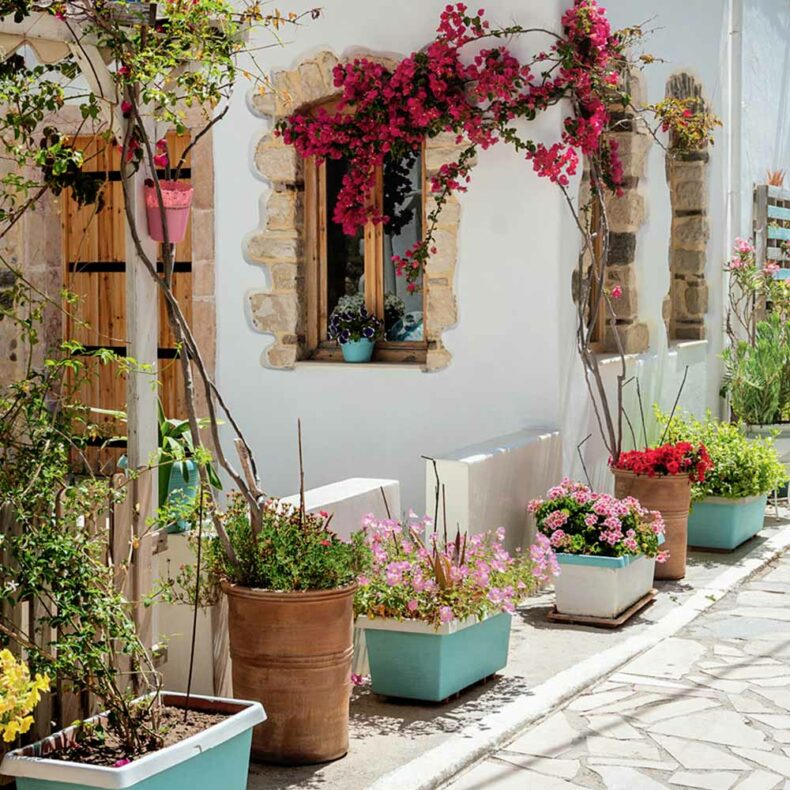
In Heraklion, you’ve got all the ingredients for a fascinating Greek holiday. The city has an extensive Old Town boasting Byzantine, Venetian, and Ottoman influences.
And, while it’s far from Instagram-perfect Santorini or Mykonos, that’s exactly the point in Heraklion. You’ll love simply wandering the narrow streets and stumbling upon the remains of the past.
Take your time to feel the galvanising rhythm of this, the fifth-largest city in Greece.
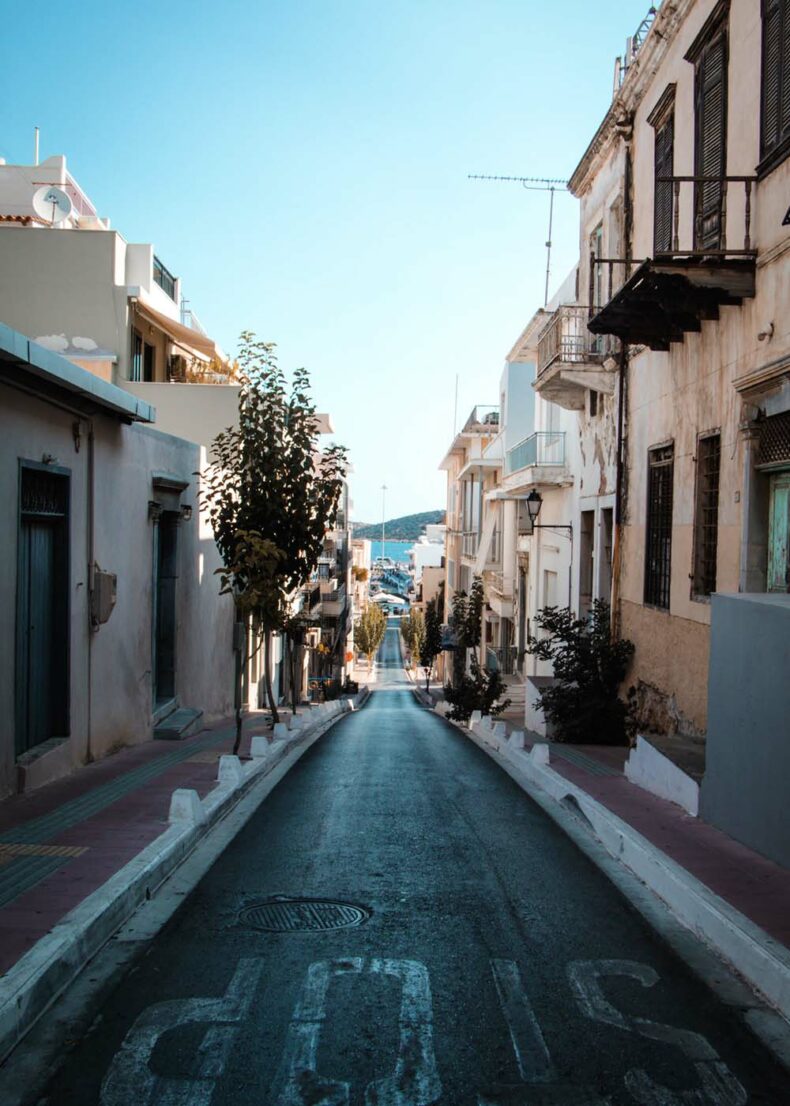
Photo on Unsplash
But it’s by the sea that Heraklion shows its epic side. Many top attractions are found near the water, confirming the city’s status as an important Mediterranean port.
One highlight is the stunning Venetian Port with its mighty fort and picture-perfect harbour dotted with boats and yachts.
A visit to the Rocca a Mare Fortress is a must, and the best sunsets can be admired next to the Heraklion Lighthouse at the tip of the harbour walkway.
If you crave more Venetian architecture, the Basilica di San Marco and the Loggia in the heart of the city are worth checking out.
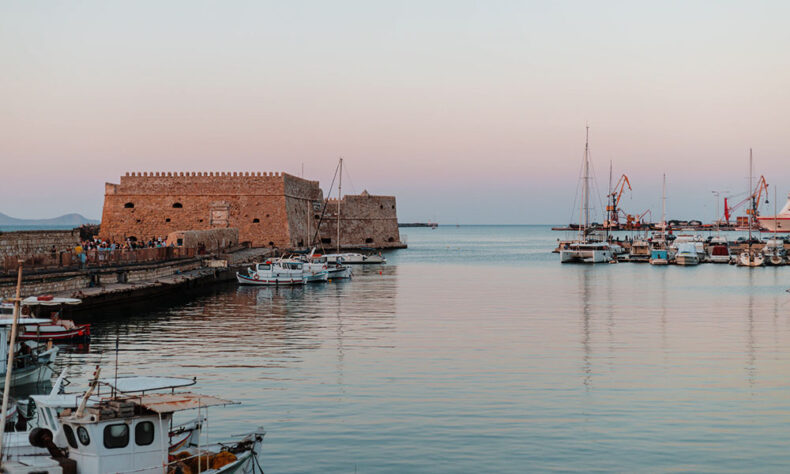
Photo on Unsplash
Heraklion can work both as a short day trip or a longer city break. Many visitors to Crete give it a pass, continuing straight to the island’s heavenly resorts.
But if your idea of a Greek holiday involves a more urban setting, then you’ve chosen the right place.
Combine extensive sightseeing with chilling out on the terraces of cafés, feasting on gyros and souvlaki in the tavernas, and devouring sweet loukoumades from street vendors.
However, one thing Heraklion lacks is a proper beach. For that, head to Ammoudara on the outskirts of the city, or check out the sandy stretches at Karteros, Arena, or Mades.
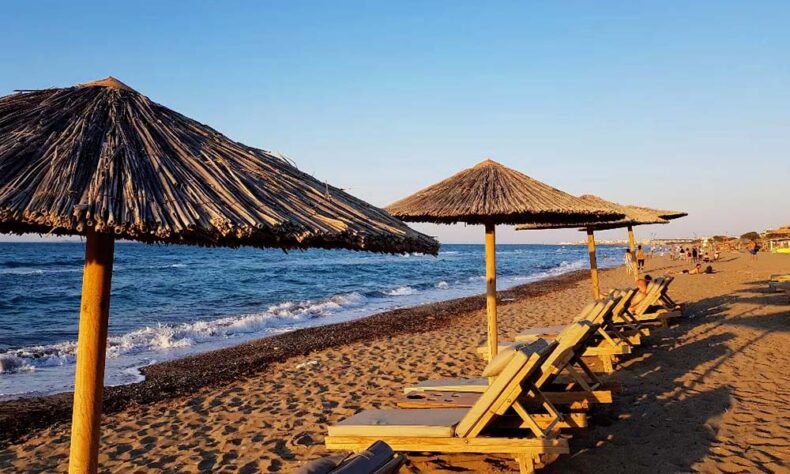
Photo on Instagram
No visit to Heraklion is complete without seeing glorious Knossos, which is one of the wonders of the ancient world. This large site was the former Cretan capital and the cradle of the Minoan civilisation, and it’s a pilgrimage of sorts for history buffs.
You may also know Knossos from the Greek myths, for it is here that the hero Theseus defeated the Minotaur inside the maze (also called the Labyrinth).
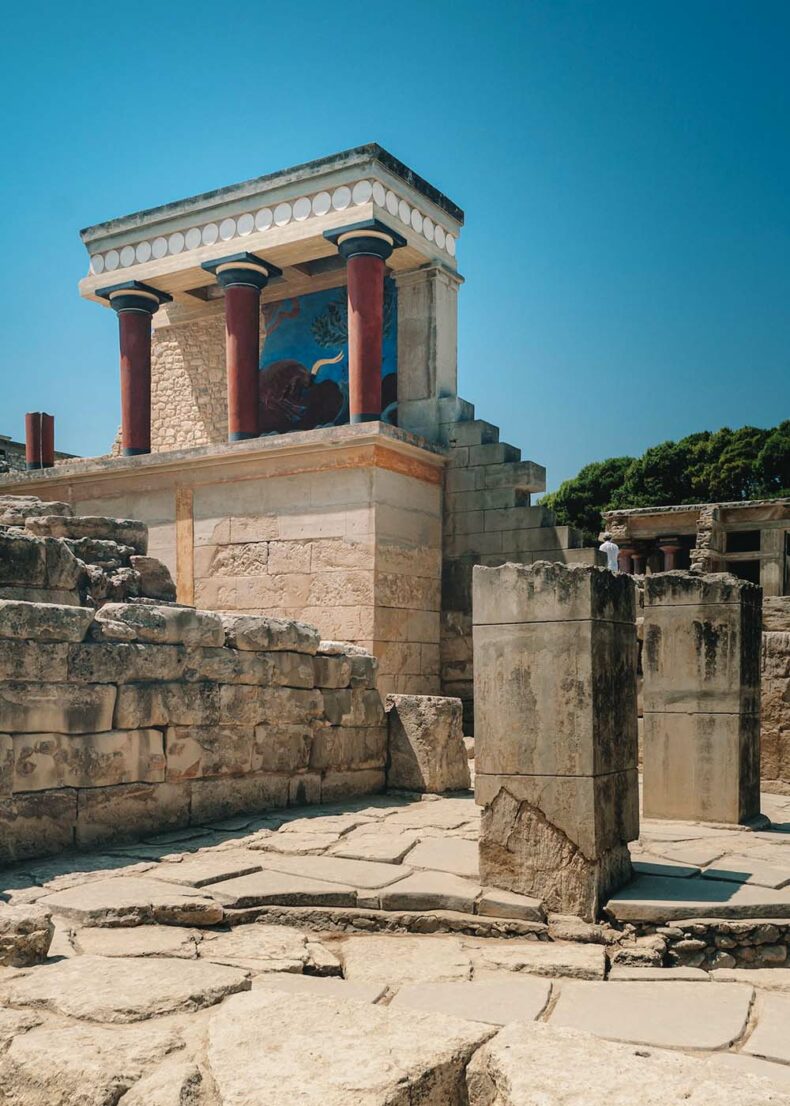
Photo on Unsplash
Naples, Italy
A deeply passionate destination
Much like its famous volcanic neighbour Vesuvius, electrifying Naples is always ready to erupt. Not with lava, though.
The capital of southern Italy radiates with world-class culture, unparalleled architectural masterpieces, and mouthwatering food.
Non-stop movement is part of the lifestyle here. A visitor’s first impression of Naples is almost always chaotic. But take time to savour and understand how this city is organised, and you’ll be rewarded with one of the most exciting destinations in the world.
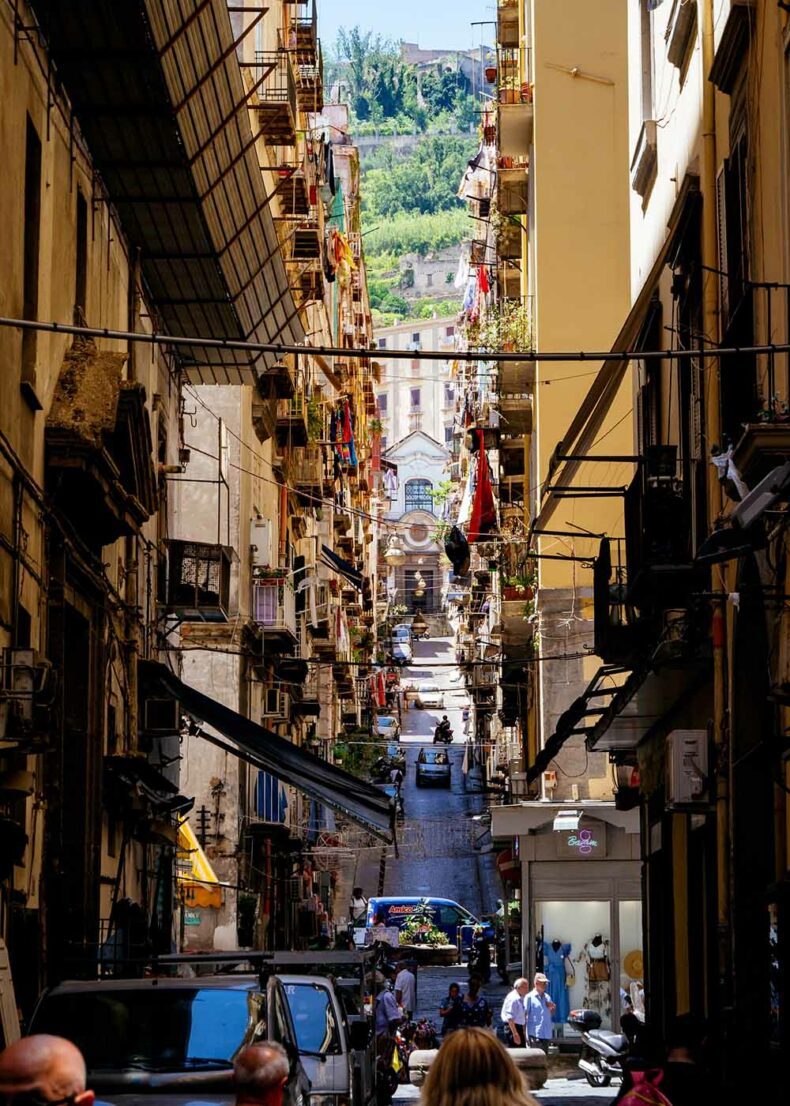
Photo on Unsplash
Starting with the historical centre is always a great idea in Italy, and Naples has an enormous one. Tracing its origins back to the Greek empire, this city is among the most ancient in Europe.
Use central Via San Biagio, also called Spaccanapoli, as a compass to navigate the maze of the Old Town.
Let the gargantuan Naples Cathedral take your breath away, see Caravaggio’s works in the Pio Monte della Misericordia chapel, and admire the Rococo sculptures in the Cappella Sansevero.
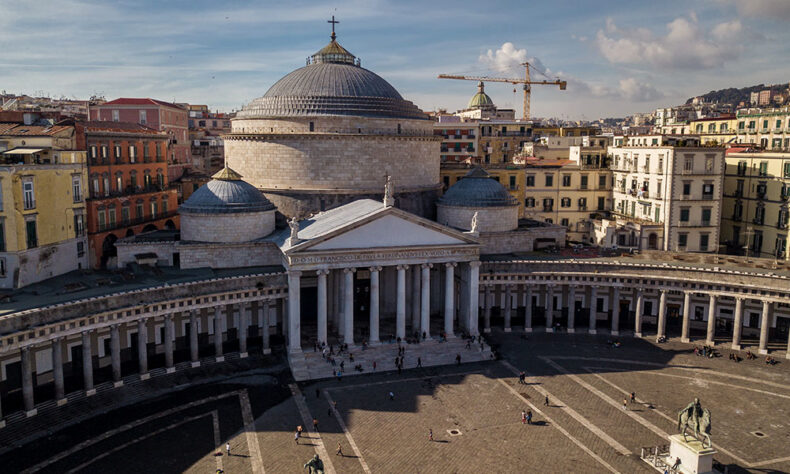
Photo on Unsplash
Museums in Naples are in a league of their own, and you should definitely explore several for some cultural overdrive.
Set in a former 17th-century palace, the National Archaeological Museum showcases the wonders of ancient Greece and Rome, including the Pompeii mosaics.
Go to the Royal Palace of Naples for opulent interiors, and be amazed by the grandiose beauty of the Piazza del Plebiscito in front of it.
For something different, head underground to the eerie Catacombs of San Gennaro.

Photo on Unsplash
There’s one thing Naples does better than anyone, and that’s pizza. The world-famous dish was invented here, and the city still prepares the best pizzas in the world.
Nothing can compare to the aroma of a freshly-baked Margherita on the streets of Naples. But you need to know where to go to not fall into a tourist trap.
The Antica Pizzeria Di Matteo is a long-standing gem in the Old Town, 50 Kalò is for a more upscale pizza feast, and Gino e Toto Sorbillo delivers simple and delicious perfection.
Naples is also known for its various types of pasta, sartù di riso (a savoury rice dish), and babà cakes, so make yourself a culinary tour.
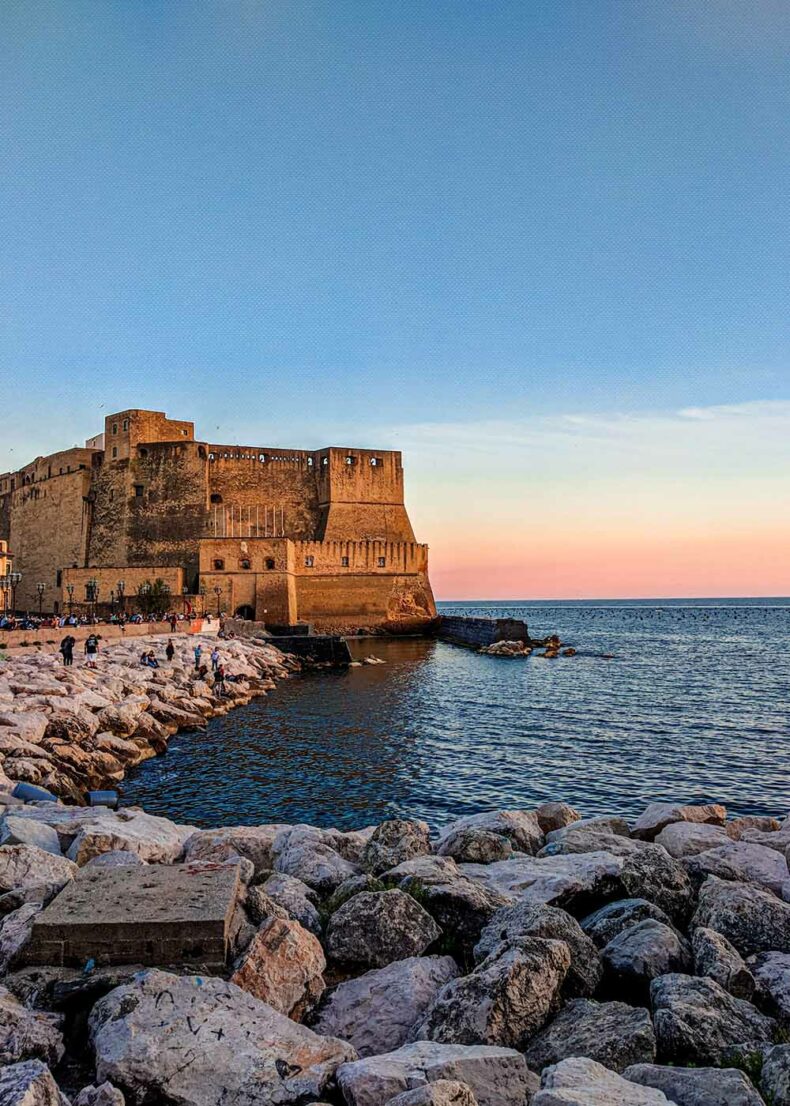
Photo on Unsplash
But don’t stick only to the historical centre. Naples has a rich variety of neighbourhoods and day-trip destinations.
Take a walk next to the sea on the promenade in Santa Lucia and gaze at the mighty silhouette of Ovo Castle.
Pair a visit to the ancient city of Pompei with a hike to the crater in Vesuvius National Park.
And, if you’re into island bliss, regular ferry connections make it easy to take a trip to marvellous Procida and Ischia.
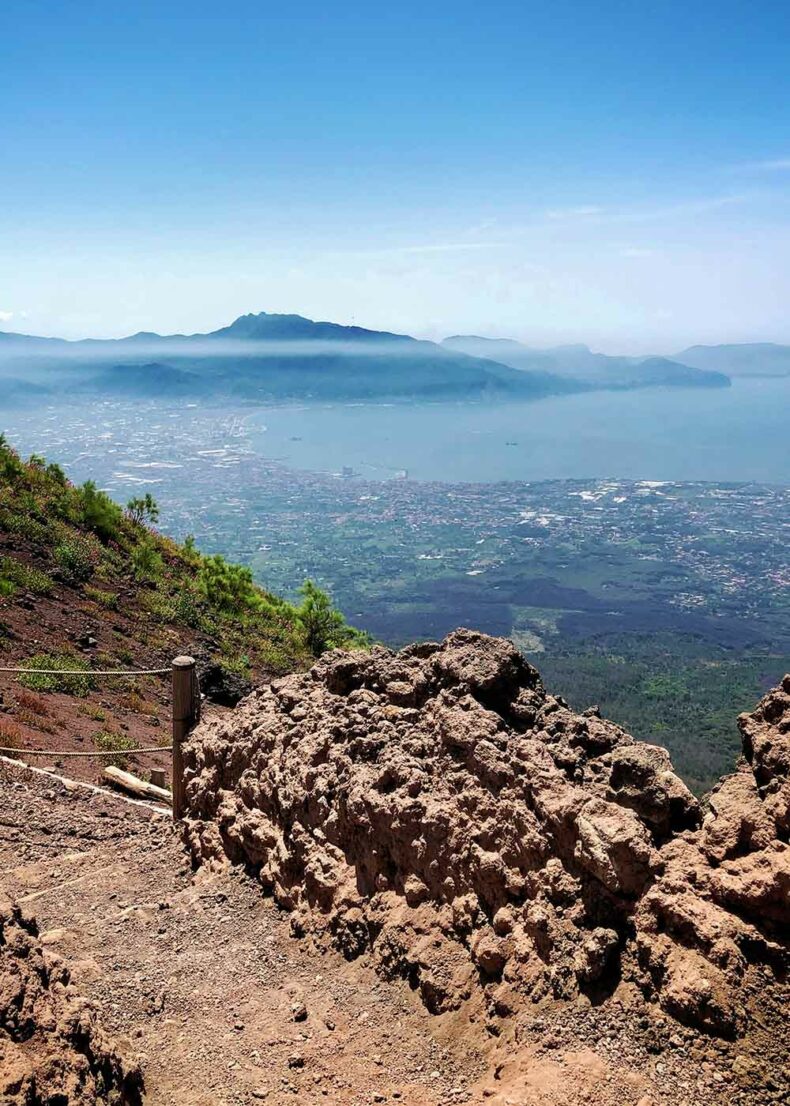
Photo on Unsplash
Read more about authentic travel experiences in Baltic Outlook.